The Exploitation of the Coral Reefs of the Hainan Island
H. Peters
Beauty and Opportunity:
Mother Nature’s South China Sea and it’s beautiful coral reefs provide an abundance of natural beauty, a way of life, and economic opportunity for many of the locals on Hainan Island. On top of that, domestic and international tourists travel from near and far to experience Mother Nature’s beauty on the Island of Hainan. The Chinese national government also profits greatly from the living corals and species in the South China Sea.
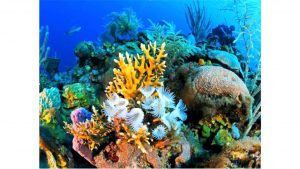
LIVING AND BEAUTIFUL. Forever? At this rate… Unfortunately NOT…
- The South China Sea is home to 76% of the world’s coral species
- The South China Sea holds 37% of the world’s reef-fish species
- HOWEVER – Overall coral abundance around Hainan Island has decreased by 80% in the last three decades.
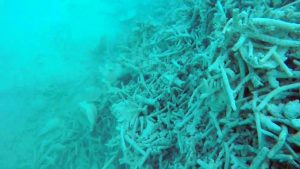
Causes of Devastating Impacts on the Coral Reefs
- Special Economic Zones
- South China Sea Dispute
- Mal Fishing Practices
- Coral Mining
- Tourism
- Emphasis on Economy and not the “Environment” and Overall Lack of Government Interaction/Regulations

Diving Deeper into the Issues
Special Economic Zone
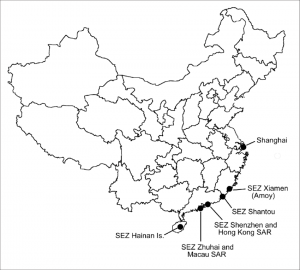
Special economic zones are intended to function as zones of rapid economic growth by using tax and business incentives to attract foreign investment and technology. Local governments in China have been allowed to offer tax incentives to foreign investors and to develop their own infrastructure without the approval of the central government. In 1980, the first four Special economic zones were created in southeastern coastal China and consisted of the four cities, Shenzhen, Zhuhai, and Shantou in Guangdong province and Xiamen in the Fujian province. The economic success of the first four Special economic zones directly resulted in Hainan Island becoming the largest Special economic zone in China in, 1988.
As of 2017, Approximately $5.3 trillion in international trade goes through the South China Sea waters annually (Feng, 2017). However,the status of Hainan being a Special economic zone has contributed significantly to exploitation of the coral reef around the Hainan Islands. The coral ecosystem is affected by high levels of unregulated and illegal fishing activities. On top of that, it has lead to major increases in population and infrastructure buildings, which simultaneously harmed Mother Nature.
South China Sea Dispute
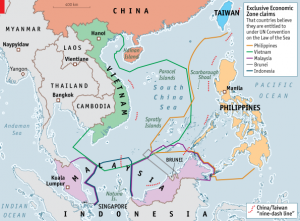
The Chinese government has a major interest in the entire South China Sea. However, the South China sea is broken-up by six different territorial “claims.” Because the South China sea is one of the world’s busiest waterways it is subject to several overlapping territorial disputes between China, Vietnam, the Philippines, Taiwan, Malaysia and Brunei. While China uses Hainan to control and administer some of their territorial claims of the South China Sea. As a result, military bases have been built on the coral reefs to “protect” territorial claims. HOWEVER, the military bases built on the coral reefs are directly killing the coral ecosystems. Even more so, the territorial disputes have increased completion amongst fisherman – which has also directly harmed the coral reef ecosystems.
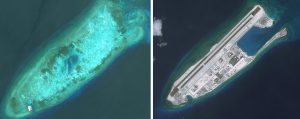
The scramble for fish has led to the use of controversial methods of fishing that have destroyed the local coral reef. The use of dynamite for fishing destroys coral reefs. The sheer concentration of coral reef on the South China Sea makes it difficult for fishermen to blow-up schools of fish without impacting the underlying coral reef. The practice shutters fragile coral colonies. An estimated 55% of the coral reef in Hainan has been destroyed as a result of dynamite fishing. Hainan’s fishermen have also used cyanide to catch fish. Fishermen often squirt concentrated sodium cyanide onto reefs to stun fish and catch them alive. The challenge is that cyanide is indiscriminate and kills coral and other reef creatures.

Coral Mining
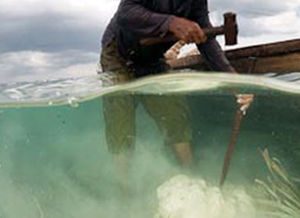
The coral reef around Hainan Island has also been severely depleted by large scale coral mining. In China, coral is both an important economic and cultural resource. Coral is also a valuable art commodity in Hainan and around China. It is used for food, medicines, art, tools and jewelry. Consequently, it is harvested in large quantities by people in the coastal community. There is even a thriving coral curio trade in most of Hainan’s major cities. However, the use of coral for consumer goods as a result of coral mining has significantly harmed the coral reef off the coast of the Hainan Island.
Tourism
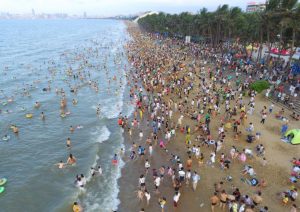
The Coral reefs around Hainan Island, while they are unfortunately being severely damaged, they are still beautiful ecosystems that attract thousands of tourists. The main challenge is that growing tourism in Hainan is putting significant pressure on coral ecosystems. The recreational activities of tourists damage the coral reef. For instance, unregulated dives by untrained and careless divers have contributed to coral damage. Moreover, investments that are meant to support tourism have had an impact on coral abundance on the Hainan Island. Construction projects directly destroy coral habitats. On top of that, tourism infrastructure construction projects have increased sediment levels and the overall turbidity of the water – which have choked the coral reefs. Overall, tourism and the simultaneous infrastructure building in the past three decades have led to the destruction of 22 square miles of coral reef. YIKES!
Surfing
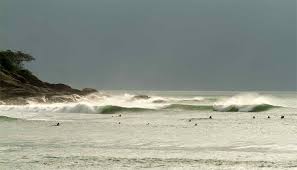
Surfing has also become more popular on the Hainan Island both locally and through tourism. Subsequently, tourism due to surfing has also increased significantly. There have been several professional competitions off the Hainan Islands in the past few years. Surfing was also just added to the 2020 Olympics in Tokyo. On a local level, hundreds of children are learning to surf with the new dream of becoming an Olympic surfer. Many Chinese students, like swimming and gymnastics, have been taken from traditional Chinese schools and sent to the Hainan Islands to learn how to surf or improve their surfing skills. Whether it is aspirations for the Olympics or just local and tourist fun, surfing is growing rapidly in China. HOWEVER, the smallest but, most essential item in surfing, wax, has started to and will continue to cause damage to the coral reef ecosystems.
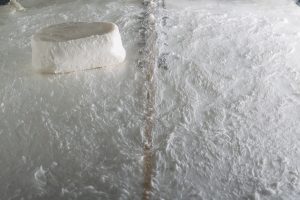
Right now, virtually every surf wax on the market today contains paraffin – an unnatural, unsustainable byproduct of the petroleum refinement process. The paraffin when put in the water increases carbon dioxide levels and in-turn hurts the coral reef ecosystems. Big-name surf waxes also rely on soy, the production of which not only relies on pesticides and unnatural chemicals, but also requires huge amounts of valuable fresh water and contributes to deforestation. On top of that, most of the wax is package in plastic or other environmentally harmful materials. While, wax may seem like a small problem, it is about changing a mentality and getting a head of a problem before there even needs to be one. Because surfing is still relatively new in China, it would be beneficial to ban certain waxes and even sunscreens that raise carbon dioxide levels in the ocean or hurt the environment in any way.
Emphasis on “Economy” and not the “Environment?”
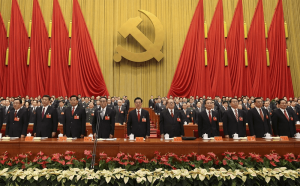
There is the foreign belief that the Chinese citizens and government do not care about the Environment. HOWEVER, that is not true! YES, there has been an overall lack of lack of government interactions and regulations BUT, they are not entirely negligent. In the past three decades, there has been a major emphasis on building the economy and the environment has subsequently taken a back seat.
The Special Economic Zones, the South China Sea Dispute, fishing, coral mining and tourism all provide jobs to Chinese citizens and income for the Chinese local and national government. The government has ignored illegal overfishing because its primary focus is on economic development. In order to assert its territorial claims, the government has allowed fishermen from Hainan Island to engage in commercial fishing activities that have led to the destruction of coral reefs. The coral ecosystem is affected by high levels of unregulated and illegal fishing activities. The government has ignored illegal overfishing because its primary focus is on economic development. The waters around Hainan Islands are viewed as an economic zone that must be exploited to ensure China’s rapid economic growth. Tourism is one of the major economic activities in Hainan. Both the government and the local community have an economic interest in the tourism industry. The government supports tourism because it drives economic development and provides revenue through taxes. Tourism creates employment and supports local businesses.
While putting a stop to these practices would significantly help the coral reef ecosystems, that would be a very unreasonable “solution” that would not work. Many Chinese citizens, especially on the Hainan Island, need these jobs to survive. However, there needs to be happy medium. The Chinese Government must continue to work at the National and Local levels to grow their economy but also, protect the environment for the environment’s sake and also for the sake of their economy. Ironically, while these practices have led to a major economic boom over the past three decades, the damages done to the marine ecosystems simultaneously are forcing the Chinese government to spend a percentage of their GDP in damages. HMMM?!
Beauty and Opportunity Forever?! Possibly!
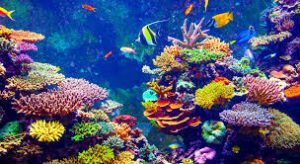

Coral Reef Marine Protected Areas on Hainan Island and in the South China Sea
Given the serious damage that has taken place in the last three decades, it is important for the government to put in place severe restrictions to ensure coral reef regeneration. The National government needs to play an even greater leadership role in the protection of corals by creating coral reef marine protected areas around Hainan Island. The Chinese government, through the State Oceanic Administration, needs to ensure that fishermen have no access to coral reef marine protected areas. On top of that, tourism and fishing should be prohibited in areas where the coral has been severely affected because they are the most significant threat to coral reef sustainability. Marine protected areas are the most effective instruments of ensuring the protection and rejuvenation of coral reef in the South China Sea.
Enforcement of Existing Regulations
Enforcement of coral reef marine protected areas is a critical aspect of reversing the damage to the coral reef around Hainan. The government should ensure that fishermen do not use indiscriminate fishing practices which damage the coral reef. It should also ensure that the coral reef marine protected areas are not accessible by investing in regular policing patrols.
The local government needs to enforce existing regulations to curtail the damage caused by everyday tourism activities. All diving shops must be licensed. Equally important, the licensure should depend on the training and certification of divers. Local authorities should fine anyone who infringes coral protection regulations.
The government should also limit and eventually restrict the construction of tourism investments in the South China Sea. The existing investments have had a devastating impact on coral coverage and distribution. Further damage to coral reef should be prevented by a moratorium of structural development.
Monitoring of Coral Reef Dynamics and Condition
The Chinese government should also increase the number of researchers in the marine protected areas so they can monitor the coral reef dynamics. Monitoring the changes in the coral reef ecosystem are extremely important because it will help with the direction of future policy development. Researchers can provide important insight on biodiversity, coverage and distribution of coral in the South China Sea. Monitoring can also play an important role in promoting coral reef conservation efforts.
Public Awareness
Public Awareness on all levels is critical! The survival of reef ecosystems around Hainan Island can only be ensured by educating the public about the importance of coral preservation to the local and national economy. Most tourism companies and fishermen engage in harmful coral damaging and exploitation activities because it is their livelihood BUT, they usually do not understand the future environmental and economic impacts.
The “YEW! Do it Clean” movement should be brought to China as part of the public awareness campaign. Excessive waste production, oil drilling, and deforestation are currently wreaking havoc on all parts of the Earth. More specifically, overfishing, tourism, the South China Sea conflict and lack of government regulation are having a devastating impact on the sustainability of coral reef ecosystems around Hainan Island. Until a way is found to avoid these environmentally destructive practices, it is crucial to be mindful of all the little things both locals and tourists do each day. Whether it’s how they drive, how they use water, or even how they surf, everything they do has an impact. YEW! is that solution.
Handcrafted in California, USA, with entirely environmentally friendly ingredients, YEW! is just that: Your Environment’s Wax!. Unlike other big-name surf waxes whose formulas are based on petroleum refinement waste or pesticide-reliant, commercially farmed soy and massive hydration processes, YEW!’s main ingredient is beeswax. It’s the perfect recipe of the best ingredients offered by Mother Nature – the wax surfers should have been putting between their boards and toes all along. By getting YEW! on the Hainan Islands, not only will the surfers no longer be harming the coral reefs, the product and company will be starting to spread the mentality of the “Do it Clean” movement.

Tourists and locals do not need to be surfers to spread the mentality that – small changes lead to big changes and by making change fun and simple, it allows both locals and tourists to “Do it Clean” however they may interpret it. Laws and regulations can only get a society so far. An overall fun awareness campaign will also allow the Chinese citizens, government and tourists to be educated about the importance saving the coral reefs in the South China Sea for centuries to come!
Works Cited
Eriksson, Hampus, Henrik Österblom, Beatrice Crona, Max Troell, Neil Andrew, James Wilen,
and Carl Folke. “Contagious exploitation of marine resources.” Frontiers in Ecology and
the Environment 13, no. 8 (2015): 435-440.
Feng, Yang. “Examining the Legislation in China’s Special Economic Zones: Framework,
Practice and Prospects.” Practice and Prospects (November 1, 2017) (2017).
Hughes, Terry, Huang, and Matthew AL Young. “The wicked problem of China’s disappearing
coral reefs.” (Conservation Biology 27, no. 2 2013), 270.
Li, Xiubao, Daoru Wang, Hui Huang, Jing Zhang, Jiansheng Lian, Xiangcheng Yuan, Jianhui
Yang, and Guoseng Zhang. “Linking benthic community structure to terrestrial runoff and upwelling in the coral reefs of northeastern Hainan Island.” Estuarine, Coastal and Shelf Science 156 (2015): 92-102.
McManus, John W. “Offshore Coral Reef Damage, Overfishing, and Paths to Peace in the South China Sea.” The International Journal of Marine and Coastal Law 32, no. 2 (2017): 199- 237.
Morton, Katherine. “China’s ambition in the South China Sea: is a legitimate maritime order possible?.” International Affairs 92, no. 4 (2016): 909-940.
The Exploitation of the Coral Reefs in China 15
Riegl, Bernhard, and Sam Purkis. “Coral population dynamics across consecutive mass mortality events.” Global change biology 21, no. 11 (2015): 3995-4005.
Titlyanov, Eduard A., Tamara V. Titlyanova, Xiubao Li, Gayle I. Hansen, and Hui Huang. “Seasonal changes in the intertidal algal communities of Sanya Bay (Hainan Island, China).” Journal of the Marine Biological Association of the United Kingdom 94, no. 5 (2014): 879-893.
Watson, James EM, Nigel Dudley, Daniel B. Segan, and Marc Hockings. “The performance and potential of protected areas.” Nature 515, no. 7525 (2014): 67.
Wu, ShaoHong, and WenJun Zhang. “Current status, crisis and conservation of coral reef ecosystems in China.” Proceedings of the International Academy of Ecology and Environmental Sciences 2, no. 1 (2012): 1.
